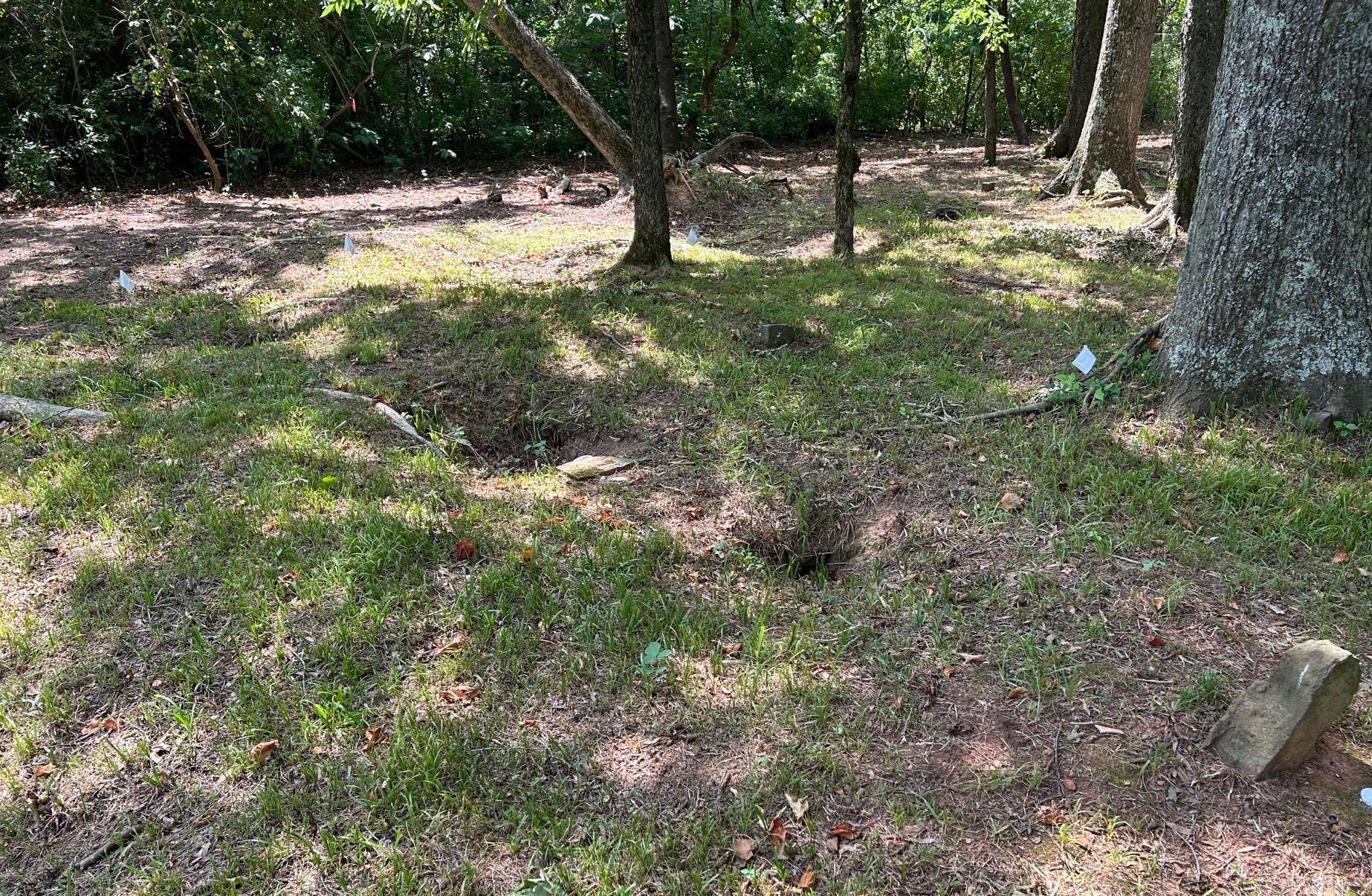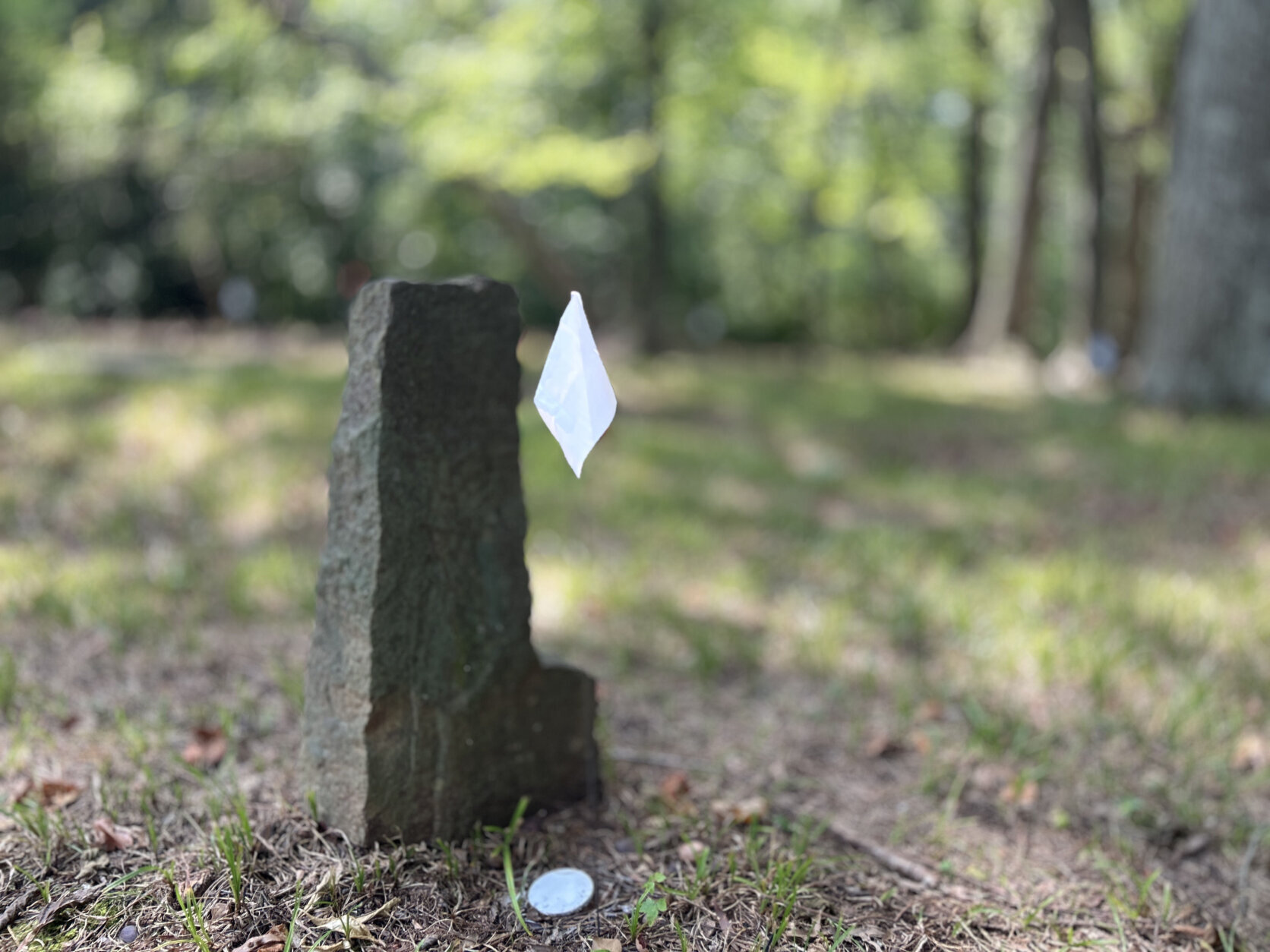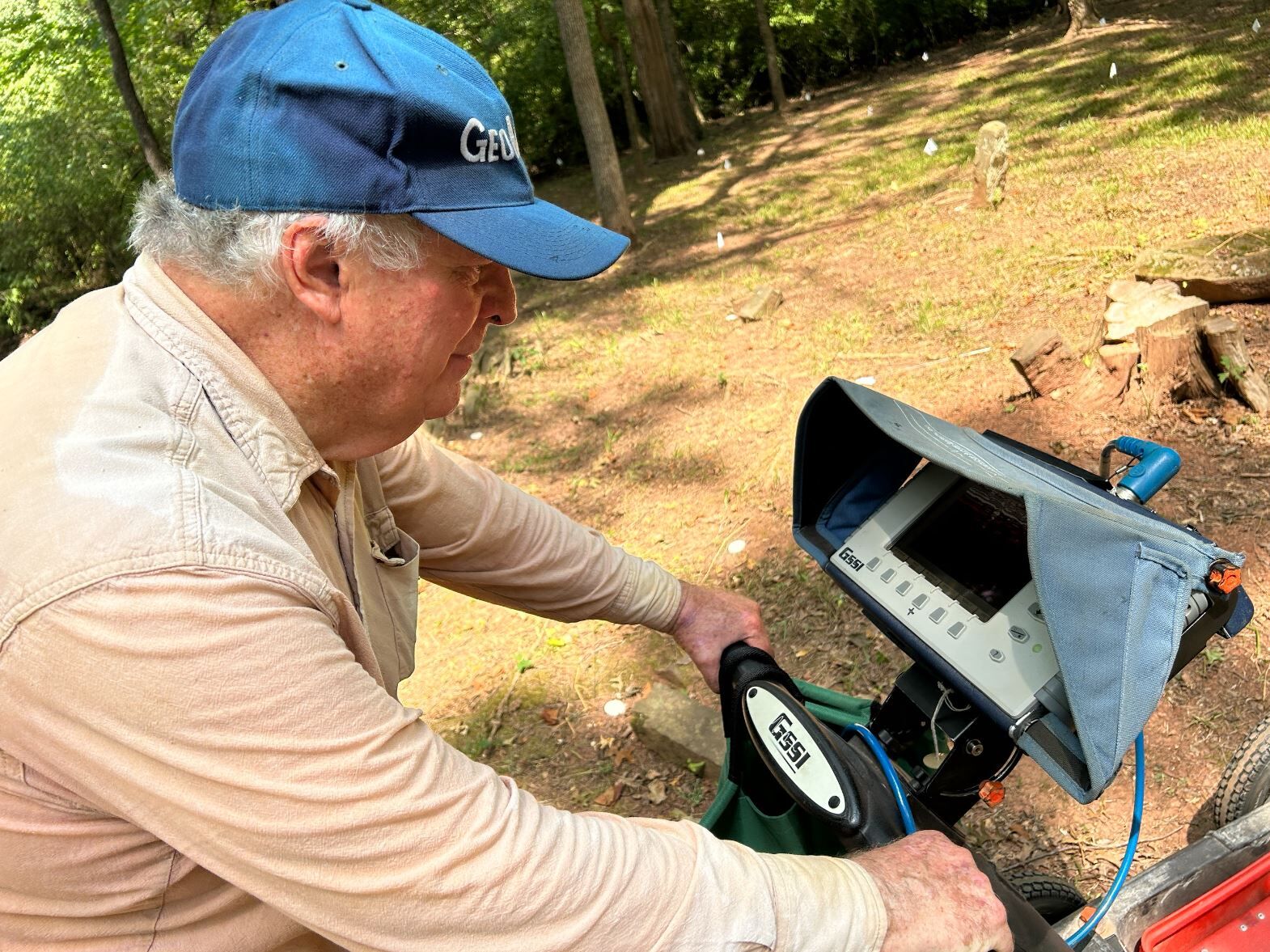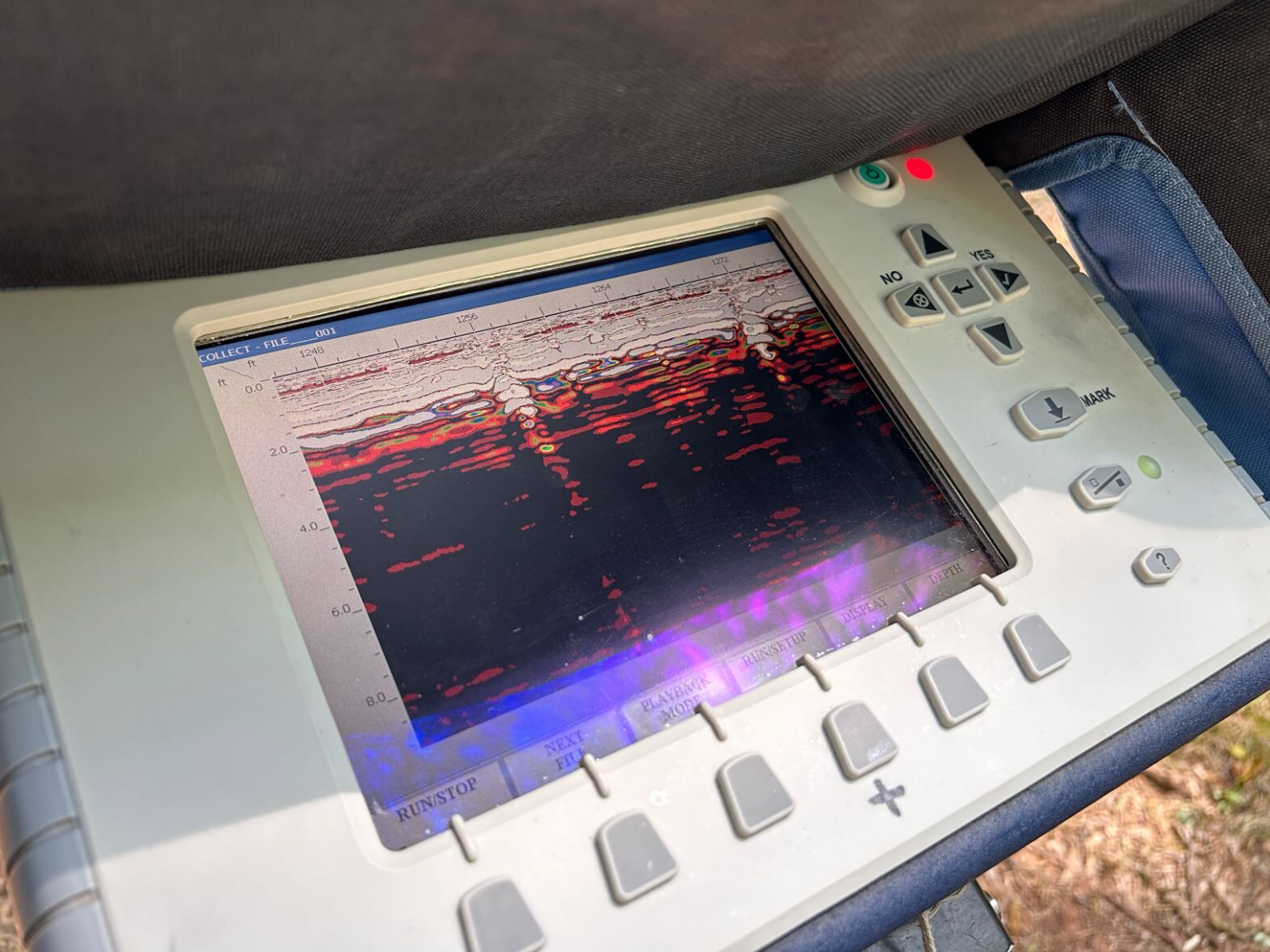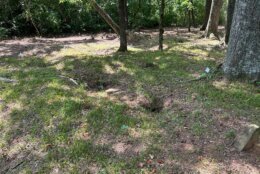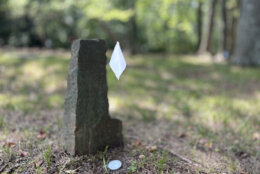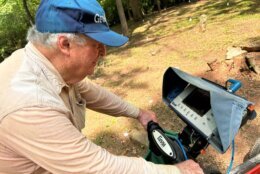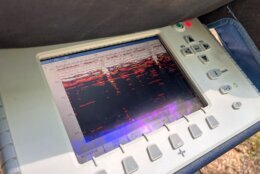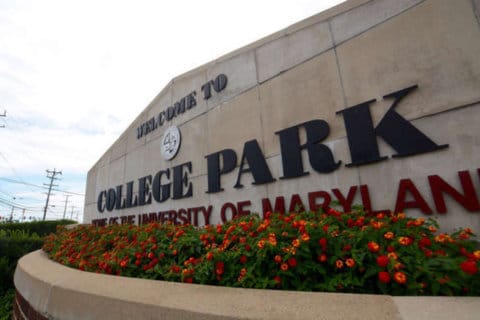A few hundred yards from the popular Atlantis Waterpark at Bull Run Regional Park, in Centreville, Virginia, researchers identified nine graves Monday, using ground penetrating radar in a recently discovered cemetery of African Americans who were likely freed or enslaved.
With Monday’s research, the cemetery is thought to be the final resting place of 100 descendants of formerly enslaved African Americans. By 2022, 91 graves had been identified.
In the mid-1700s, the land was owned by Robert Carter III, said Paul McCray, historian with NOVA Parks.
“He was one of the richest men in America. He owned over 500 enslaved, and plantations all over Virginia,” McCray said.
However, “he started to have a bit of a change of heart about his life, and he adopted the Baptist faith in the 1770s.”
Standing in a cleared area, near graves marked by small white flags, McCray said nails found at the location indicate where Carter built the modest wooden church in 1775.
“In the early 1790s, he did something that no one else had done in America,” said McCray. “He decided to free his 500 enslaved people — he showed up at the courthouse down in Northern Neck, and handed over a list of people.”
Carter didn’t free all of the slaves immediately, approximately 70 years before the Emancipation Proclamation.
“He freed the older enslaved first,” McCray said. “He had a careful plan, but he didn’t survive to see them all freed. He died, but his will specified that it would continue, and it did.”
In addition, Carter attempted to provide a foothold for his formerly enslaved.
“He tried to help the people he emancipated with money, education and helped them get started in farming,” said McCray. “Many of his formerly enslaved actually stayed in this area, and their descendants still live here.”
Among those who stayed was the family of Henry and Jemima Harris. Henry descended from a formerly enslaved man and woman who were freed by Robert Carter III in the early 1800s.
The Harris’s oldest son, Alfred, served four terms in Virginia’s House of Delegates, and introduced the bill that chartered the state’s first public college for African Americans.
Technology helps continue writing history
Pushing a mobile ground penetrating radar — which resembles a bulky lawn mower — Matthew Turner studied areas recently cleared of brush, on the perimeter of the land where 91 graves had been previously identified.
“It sends a radar signal into the ground, and it will reflect off any hard objects, such as a coffin, or remains of a grave,” Turner said. “And I’m getting an image on the computer screen from the data that I collect.”
Periodically, as he walks, while peering at the computer screen, he stops, for what radar determines is a grave anomaly.
“You see those two graves right there,” he said, pointing to the screen. After locating a grave, Turner uses orange spay paint, to mark the orientation of the remains.
McCray said all of the graves in the cemetery are all oriented west to east.
“The head marker is to the west, based on an African-American enslaved belief that when they are resurrected, they would stand up, and be facing Africa,” he said.
‘One gesture,’ provided opportunities
In recent years, the Virginia NAACP has held Juneteenth events at the site, and coordinated efforts to clear brush, to allow for more exploration of the park.
“We’ve had youth groups involved, faith-based groups, coming together,” said Karen Campblin, environmental and climate justice chair, with the Virginia NAACP. “Everyone from all walks of life, joining in, and helping to tell the story of the Harris family.”
Campblin said “that one gesture,” by Carter to free the enslaved, “has also allowed so many descendants to also contribute to Virginia and American history.”
In fact, the Harris family played a large role in what currently sits at Bull Run Regional Park.
“In the 1960s, they handed over land to Fairfax County, and said ‘we will deed you this land, if you build a water park that is never segregated.’ And that is how we got the Atlantis Waterpark, over there,” she said, gesturing down a well-maintained trail between the cemetery and the busy summer attraction.
Campblin said the water park is just one example of the how formerly enslaved people made a difference in the county.
“There’s so many of these different contributions that impact and influence Fairfax County and Virginia,” Campblin said.
Get breaking news and daily headlines delivered to your email inbox by signing up here.
© 2024 WTOP. All Rights Reserved. This website is not intended for users located within the European Economic Area.

